Carnotaurus, a distinctive genus of theropod dinosaur, lived during the Late Cretaceous period in what is now South America. The dinosaur’s name, translating to “meat-eating bull,” aptly describes this predator’s striking pair of horns above its eyes. This feature is unique among its carnivorous counterparts. Discovered in 1984, The only species known within this genus, Carnotaurus sastrei, was discovered in 1984 in Argentina. Unlike other large dinosaur fossils, Carnotaurus’s detailed skin-impression preservation offers a rare glimpse into the texture and appearance of dinosaur skin.
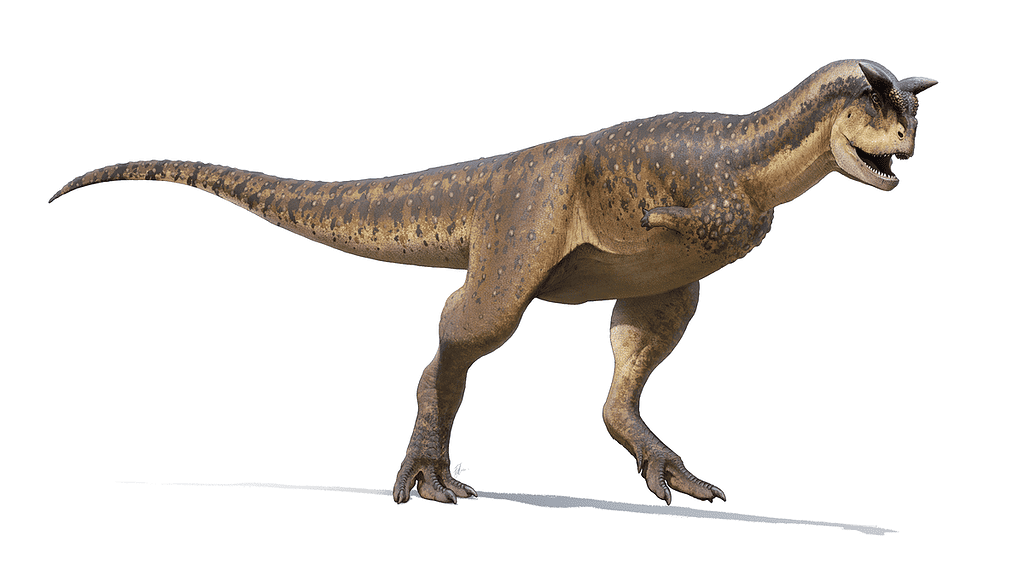
Discovery and Naming
In 1984, a paleontological expedition led by José Bonaparte, unearthed the only known Carnotaurus skeleton in the Chubut Province, Argentina. This was part of the “Jurassic and Cretaceous Terrestrial Vertebrates of South America” expedition, sponsored by the National Geographic Society.
Carnotaurus was dubbed the “meat-eating bull” as a nod to its carnivorous nature and the distinctive horns on its head. The species name, “sastrei“, honors Angel Sastre, the owner of the “Pocho Sastre” ranch where this monumental discovery was made. In 1985, shortly after the discovery, Bonaparte published an initial note introducing Carnotaurus sastrei to the scientific community. This brief description laid the groundwork for a more comprehensive examination of the skeleton, which Bonaparte would publish in 1990. The skeleton’s remarkable state of preservation, including extensive skin impressions, offered unprecedented insights into the integumentary system of theropods.
Physical Description
Measuring between 7.5 to 8 meters in length, Carnotaurus falls into the category of large theropods. However, it was lightly built compared to its contemporaries, with weight estimates ranging from 1.3 to 2.1 tons. This build suggests a predator designed for speed, capable of quick movements to catch prey or evade competition.
Distinctive Features
One of the most striking features of Carnotaurus is the pair of thick, conical horns above its eyes. These horns, unlike anything seen in other carnivorous dinosaurs, hint at a complex behavior possibly involving combat or display. Supporting these formidable horns was a deep, muscular neck, which would have been essential for withstanding the stresses of combat.
The skull of Carnotaurus was uniquely adapted, shorter and more robust than most theropods, which suggests specialization in hunting tactics. Despite its formidable appearance, the forelimbs of Carnotaurus were markedly reduced in size, bearing small, vestigial fingers. This feature, common among abelisaurids, suggests an evolutionary shift away from reliance on forelimbs for capturing prey, favoring a strategy that emphasized biting and head ramming.
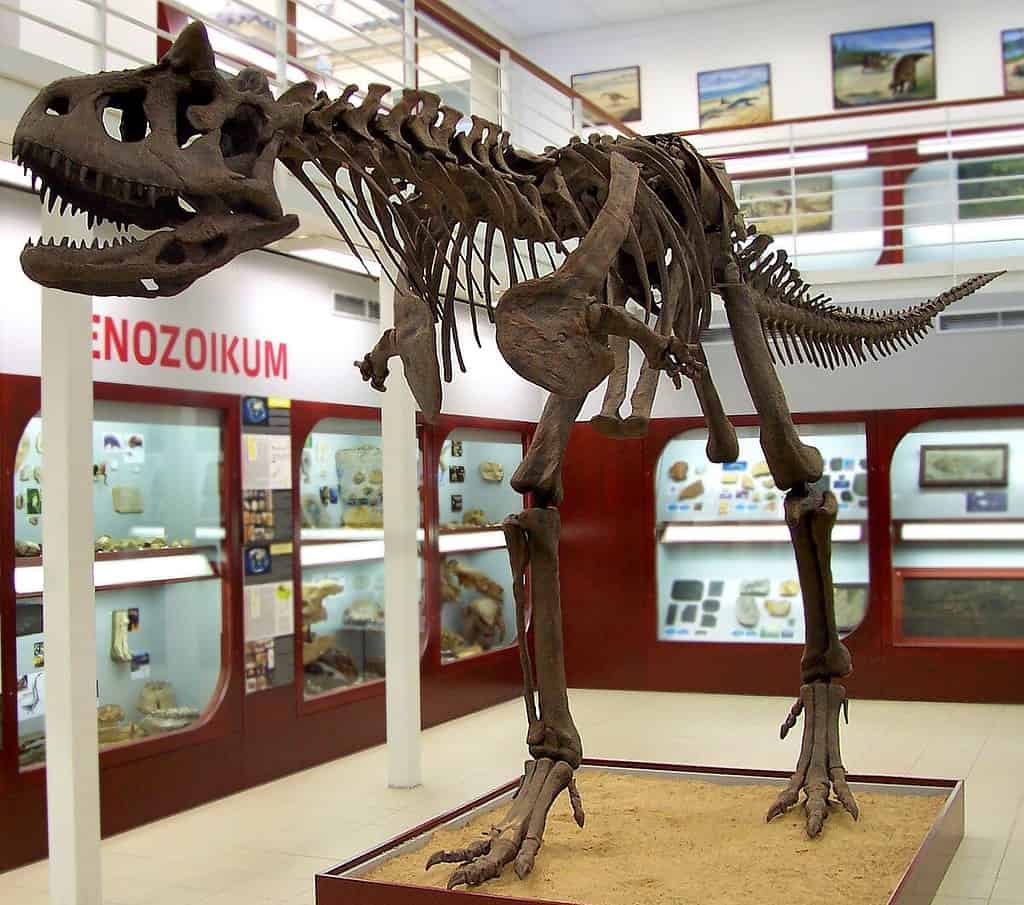
Skin and Scales
The sole Carnotaurus specimen was found with preserved extensive skin impressions, providing paleontologists with valuable data regarding the integument of these theropods. The dinosaur’s skin was covered in small, non-overlapping scales interspersed with larger bumps or osteoderms along the sides. These skin features provide insight into the texture and potential function of the dinosaur’s integument, such as thermoregulation or protection. The dinosaur lacked feathers, which is typical for theropod lineages.
Hunting and Feeding Habits
Carnotaurus was undoubtedly carnivorous, as indicated by its sharp teeth and muscular build, suited for a predatory lifestyle. The debate among scientists primarily revolves around the size and type of its prey. Some researchers suggest that Carnotaurus could have hunted very large prey, including juvenile and adult sauropods. Conversely, other studies propose that Carnotaurus might have preyed mainly on smaller animals, using its agility to catch smaller dinosaurs. The latter suggestion is supported by Carnotaurus’s relatively weak bite force, compared to other large theropods. It might have employed a hit-and-run tactic to wear down its prey rather than delivering killing bites.
Carnotaurus‘s reduced forelimbs and strong neck suggest that it did not rely on grappling but on biting and head ramming. Moreover, the agility implied by its slender hind limbs and powerful tail muscles made Carnotaurus a “speed demon”. Combined with its acute sense of smell indicated by the structure of its brain cavity, it would have made it a fierce ambush predator. In contrast, the smaller optic lobes point to less reliance on sight. Also, the structure of its inner ear hints at limited hearing capabilities, with a focus on low-frequency sounds for identifying prey at a distance.
Locomotion and Speed: The Fastest Known Theropod
Carnotaurus‘ hind limbs were notably long and muscular, with a strong femur and elongated tibia, typical of fast-moving predators. This leg structure and a relatively light body would have allowed Carnotaurus to make quick, powerful strides. The tail was stiffened by elongated bony projections (chevrons) and interlocking vertebrae. This rigidity would have made the tail an effective counterbalance during fast running, allowing for more efficient forward motion by reducing side-to-side movement. Additionally, the tail housed large caudofemoralis muscles, which would have been key in propelling the dinosaur forward by pulling the legs backward with great force.
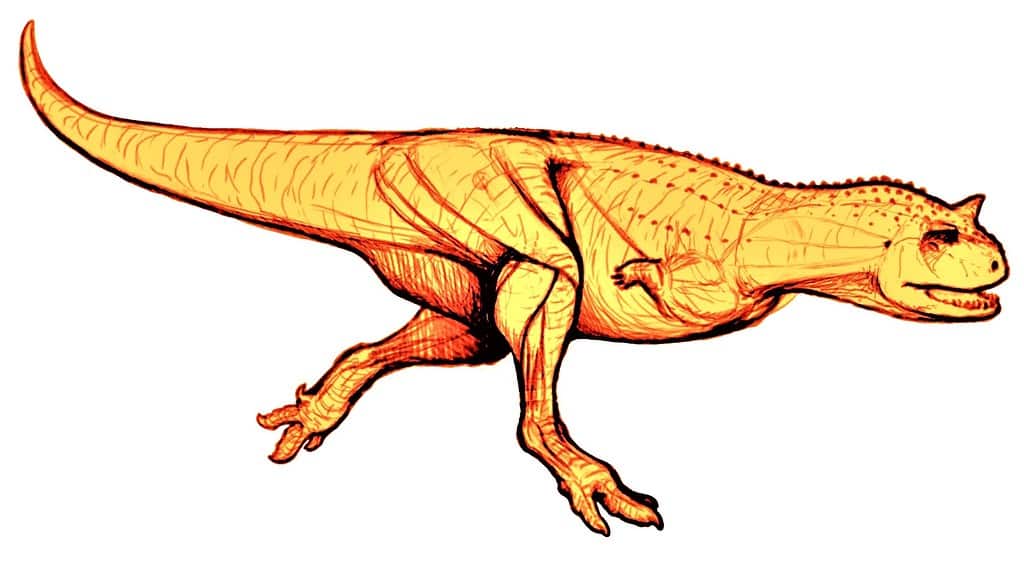
Studies, including biomechanical modeling and comparisons with the limb proportions of modern bipedal runners, suggest that Carnotaurus could potentially reach speeds of up to 48 to 56 kilometers per hour. This makes Carnotaurus the fastest known large theropod, surpassing the speed of all large predators of its time.
Classification and Relatives
Carnotaurus is a prominent member of the Abelisauridae family, a group of theropods that dominated the Southern hemisphere during the Late Cretaceous. This family is characterized by their short skulls, reduced forelimbs, and robust hind legs. Phylogenetic analyses place Carnotaurus among the most derived members of Abelisauridae, suggesting close relationships with other South American abelisaurids like Aucasaurus and Majungasaurus. However, Carnotaurus‘ exact position within the family tree is subject to ongoing research.
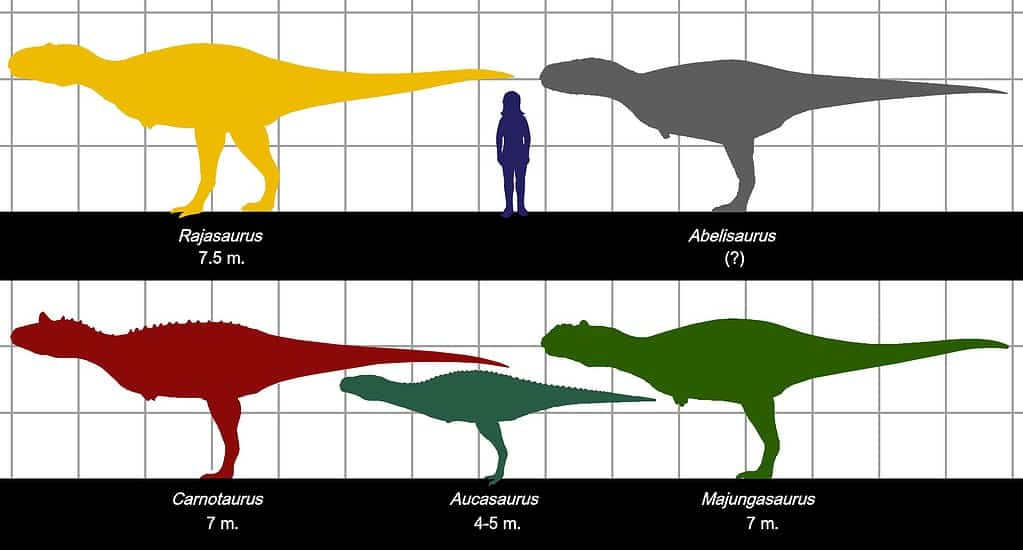
Paleoenvironment
Carnotaurus sastrei roamed Gondwana’s vast landscapes approximately 70 million years ago, in the Late Cretaceous period. This era was defined by a warm climate, featuring ecosystems from coastal beaches to dense forests. Carnotaurus made its home in the La Colonia Formation, teeming with conifers, ferns, and angiosperms. Its environment also included other dinosaur species, crocodiles, turtles, and various small mammals. This diversity points to a complex ecosystem where Carnotaurus might have dominated the food chain, asserting its role as an apex predator within Late Cretaceous Gondwana.
Carnotaurus in Popular Culture
Carnotaurus has been featured in several notable films, serving as both a fearsome antagonist and a fascinating creature. Its most memorable appearance may be in Disney’s “Dinosaur” (2000), where it is portrayed as a terrifying predator hunting the protagonists. Carnotaurus also made an appearance in the 2015 “Jurassic World” and the 2022 documentary “Prehistoric Planet“. It’s also featured in some popular video games. In “ARK: Survival Evolved”, Carnotaurus is a tamable and rideable dinosaur.
Carnotaurus also stars in Michael Crichton’s novel “The Lost World,” the sequel to “Jurassic Park”. It is depicted here with a chameleon-like ability to camouflage itself.
These portrayals have cemented Carnotaurus‘ status in the pantheon of iconic dinosaurs, alongside stars like Tyrannosaurus and Velociraptor.
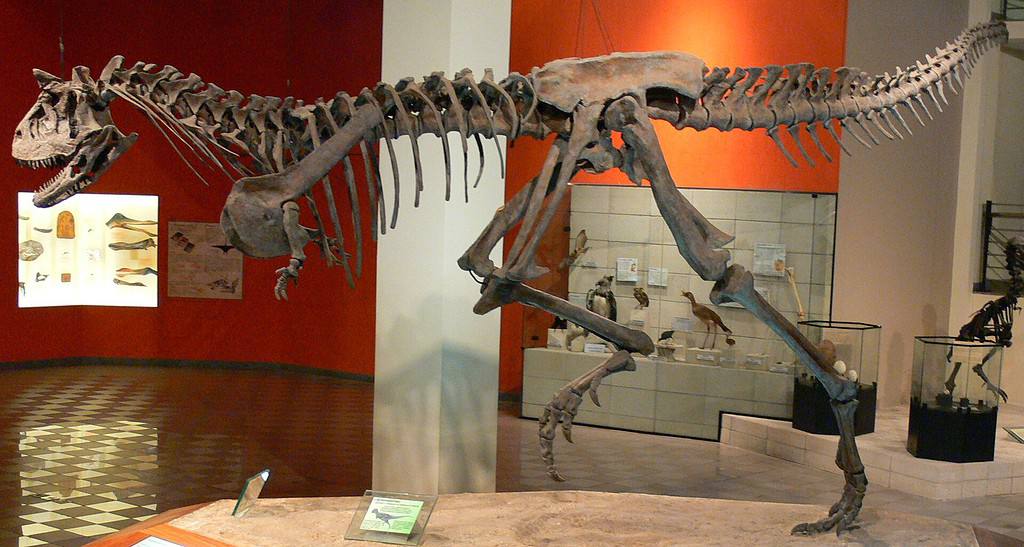
Conclusion
In conclusion, Carnotaurus embodies the remarkable diversity of the dinosaur kingdom. Its pronounced horns and agile physique underscore its apex predator status in the Late Cretaceous South America. Ongoing research into its physical characteristics, diet, and ecological niche continues to enrich our understanding of prehistoric ecosystems.


